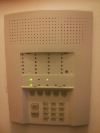How do you become a locksmith? I’ve been asked that question thousands of times.
Historically locksmith businesses have been small family businesses. The secrets to open locks without any keys have been guarded and passed only to trusted individuals. Did you know Houdini was a locksmith?
Today’s new locksmiths still learn or apprentice from established locksmiths. Basic training can be found on-line. But the best classes are taught by locksmith association members, distributor and manufacturers’ certified instructors. Locksmiths and apprentices are pre-screened before being allowed to take classes.
Joey, our current apprentice, received a scholarship and is attending classes at the locksmith national convention in Reno, Nevada this week. ALOA, the Associated Locksmiths of America, has grown to include locksmiths in the US and many other countries. Their instructors are some of the best in the world and ALOA's proficiency testing is the standard used by many states when they issue locksmith licenses.
Excellent educational instructors make exceptional locksmiths. Locksmiths who invest in their education will be ready for the changes of the future. They will provide products and services to consumers that comply with the current security standards.
If you want to learn to be a locksmith or are just curious what’s involved visit www.aloa.org.

